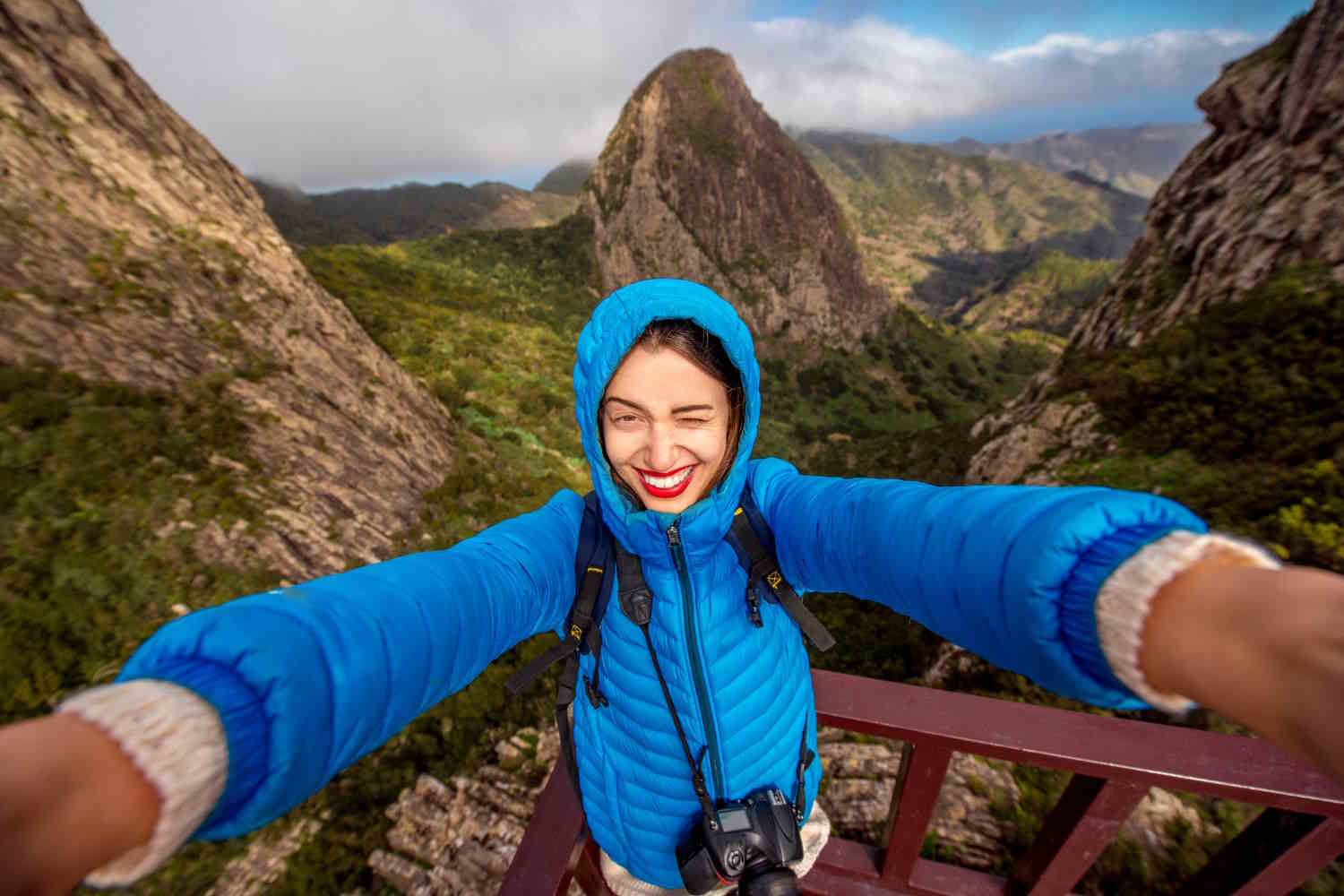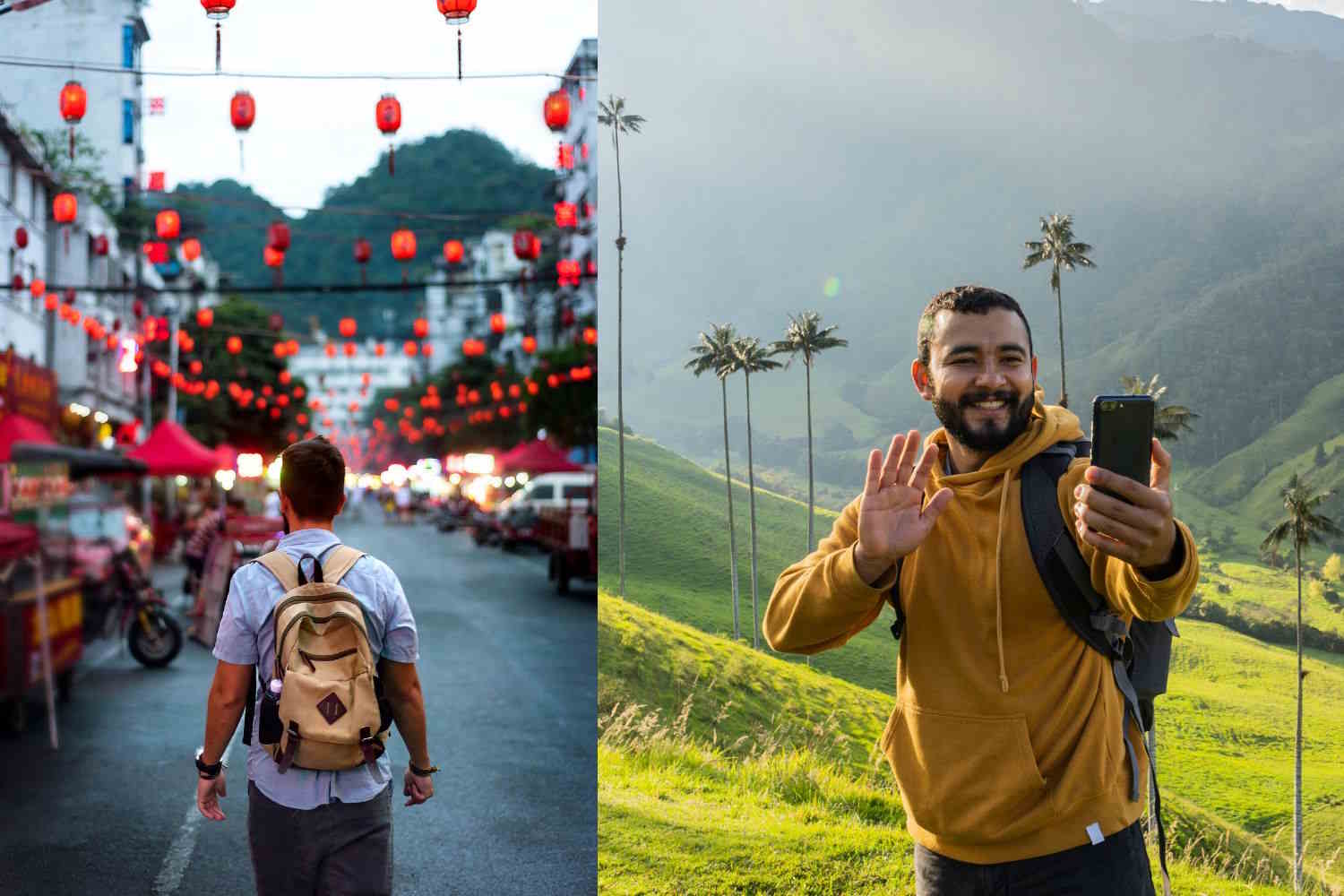Explore the profound difference between being a tourist and a traveler, and discover how embracing deeper connections with destinations can lead to a more enriching and sustainable travel experience.

@canva
Table of contents
Imagine you’re about to embark on a new adventure. Your suitcase is packed, but inside, there’s one lingering question: do I just want to visit a place, or do I want to truly live it? Traveling is much more than moving from one location to another; it’s an opportunity to discover, grow, and connect with the world in a deep and meaningful way. Travel is an art, a unique occasion not just to explore wonderful places, but also to explore yourself. The approach you take determines everything. Because there’s a profound difference between being a simple tourist and choosing to be a traveler. Although the terms might seem interchangeable, there’s a distinction that goes far beyond the destination or the budget at your disposal. It’s a difference in attitude that can radically change your perspective and the experience itself. After all, everyone can be a tourist, but only some can truly be travelers.
Tourist vs traveler: what’s the difference?
So, what makes us travelers and not just tourists? How can we transform a trip into an authentic, sustainable, and deeply enriching experience? Which one of these profiles do you identify with the most?
The tourist: consuming the trip, checking off the list
A tourist is often guided by the logic of “doing” rather than “being.” Their travel experience is more of a race against time to visit iconic landmarks, snap perfect social media photos, and collect pre-packaged experiences. This is the type of traveler who follows standard itineraries, relies on tour packages, and often moves in groups, rarely delving into the culture or context of the place they’re visiting.
For the tourist, the journey is a product to be consumed—a checklist of monuments, museums, and attractions to “tick off.” Think of the Eiffel Tower in Paris, the Colosseum in Rome, or a postcard-perfect beach in Bali. The goal is to see, photograph, and move on, often without questioning what these places mean to the people who live there every day. This approach, though legitimate, can reduce travel to a series of superficial moments, disconnected from the local reality and the impact mass tourism can have on the environment and communities.
The traveler: immersing in the reality, seeking stories and connections
On the other hand, the traveler isn’t satisfied with just seeing; they want to feel, understand, and live. A traveler is driven by curiosity and a desire for discovery.
“The traveler is the one who immerses themselves completely in the reality that the tourist does not want to see. […] They visit a place with the eyes of a child, the spirit of a traveler, and the manners of a gentleman on a first date.”
This approach results in total immersion: the traveler eats local food, talks to local people, and lets themselves be guided by the rhythms and customs of the destination.
For the traveler, a trip is an opportunity for personal growth. It’s not about collecting photos but gathering stories and emotions. Instead of visiting ten cities in a week, the traveler might prefer to stay in a small village, chat with locals, savor a traditional dish in a family-owned trattoria, or explore a less-trodden path. A traveler might intentionally get lost to find something unique, listen to the stories of a local artisan, or pause to contemplate a sunset without the urge to capture it. This approach not only enriches the traveler but also respects the environment and communities, reducing the impact of mass tourism.
Key differences between travelers and tourists

Ultimately, the distinction between a tourist and a traveler isn’t about budget or destination, as many might think. It’s not a matter of traveling on a budget or choosing exotic locations. It’s about mindset. Here are some of the key differences.
Motivation
-
Tourist: Travels to relax, collect “postcard” experiences, or meet external expectations.
-
Traveler: Travels to discover, learn, and grow, seeking authentic connections with the world.
Approach to time
-
Tourist: Follows rigid itineraries, racing from one attraction to the next to “see everything.”
-
Traveler: Embraces slowness, prioritizing the quality of experiences, such as chatting with a local fisherman or wandering aimlessly.
Interaction with the place
-
Tourist: Sticks to famous spots, often without understanding their cultural significance.
-
Traveler: Dives into daily life, learning local words or participating in authentic traditions.
Environmental and social impact
-
Tourist: May contribute to overcrowding and exploitation of local resources, such as purchasing mass-produced souvenirs or participating in unethical tours.
-
Traveler: Chooses sustainable tourism, preferring eco-friendly accommodations, local products, and low-impact travel methods like trains or hiking.
Memory of the trip
-
Tourist: Brings back photos and souvenirs, but often few deep emotions.
-
Traveler: Returns with unique stories, life lessons, and a sense of gratitude for the world.
How to become a traveler: 5 practical tips
Being a traveler means choosing to see the world with fresh eyes, ready to be amazed. It’s an invitation to leave expectations behind and bring with you only the desire to discover, learn, and respect. So, the next time you set off, ask yourself: how can I make this journey a unique story? Here are a few tips to turn your next trip into an authentic, deep, and respectful experience—just like a true traveler.
- First, try stepping out of your comfort zone. You don’t need to fly to the other side of the world—sometimes all it takes is choosing a less-expected destination, like a small village hidden among the hills of Umbria or a coastal town off the tourist routes. Maybe, instead of booking a five-star hotel, opt for a hostel or a house rented from a local family. It’s at these moments, when you leave behind predictable comforts, that the journey begins to speak to you. Try traveling alone, even if only for a weekend, or exploring without a rigid itinerary—you might find that getting lost is the best way to find yourself.
- Another key step is to connect with the locals. Stop to chat with the bartender at a small tavern, ask an elderly local to tell you the history of their village, or follow a passerby’s advice on a hidden path to explore. Learn a few words in the local language—just a simple “thank you” or “good morning” can open unexpected doors.
- And then, embrace slowness. In a world that pushes us to do everything quickly, the traveler chooses to slow down. Instead of fitting five cities into one week, spend a few extra days in just one place. Maybe spend an afternoon at a street market, savoring the smells of local spices, or wander aimlessly through the alleys of a village, letting the rhythm of the place guide you. This approach not only helps you capture the essence of a destination but is also a gift to the environment, reducing frenetic travel and opting, perhaps, for walking or cycling.
- Speaking of the environment, a traveler cannot ignore the impact of their choices. Opt for sustainable accommodations, such as a farmhouse using renewable energy or a family-run guesthouse. Buy local products, such as handmade cheese or a locally made souvenir, instead of mass-produced goods. Choose low-impact transportation, like trains or buses, whenever possible. These small gestures not only respect the planet but also support local communities, making your journey a form of care for the world.
- Finally, let yourself go with the flow. Don’t plan every minute of your trip— as Gotto writes, “the traveler takes the pen in hand and writes the story of their life. It will be full of mistakes and smudges, but it will always be a unique and original story.” Keep your heart open to surprises, whether it’s an invitation to a village celebration or an unexpected sunset that leaves you speechless. It’s in these moments, when you stop trying to control everything and let the journey flow, that the most beautiful magic happens.
In a world that pushes for quick, superficial, disposable consumption, choosing to be a traveler is an act of courage and awareness. Traveling with respect, curiosity, and openness not only enriches us, but it also helps preserve the beauty and authenticity of the places we visit. The next time you pack your suitcase, ask yourself: do I want to just see the world, or do I want to live it? The answer might just lead you to discover not only new destinations but also a more authentic version of yourself.
For more ideas on how to travel consciously, explore our new Travel channel on sustainable destinations and tips for responsible tourism.
